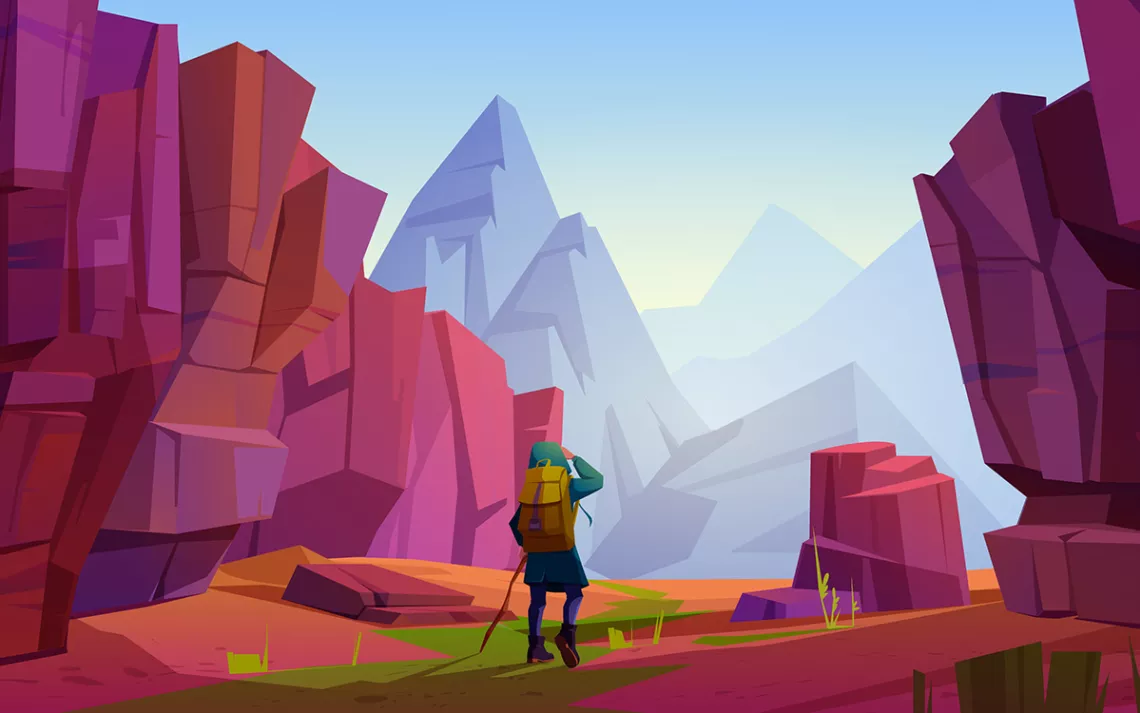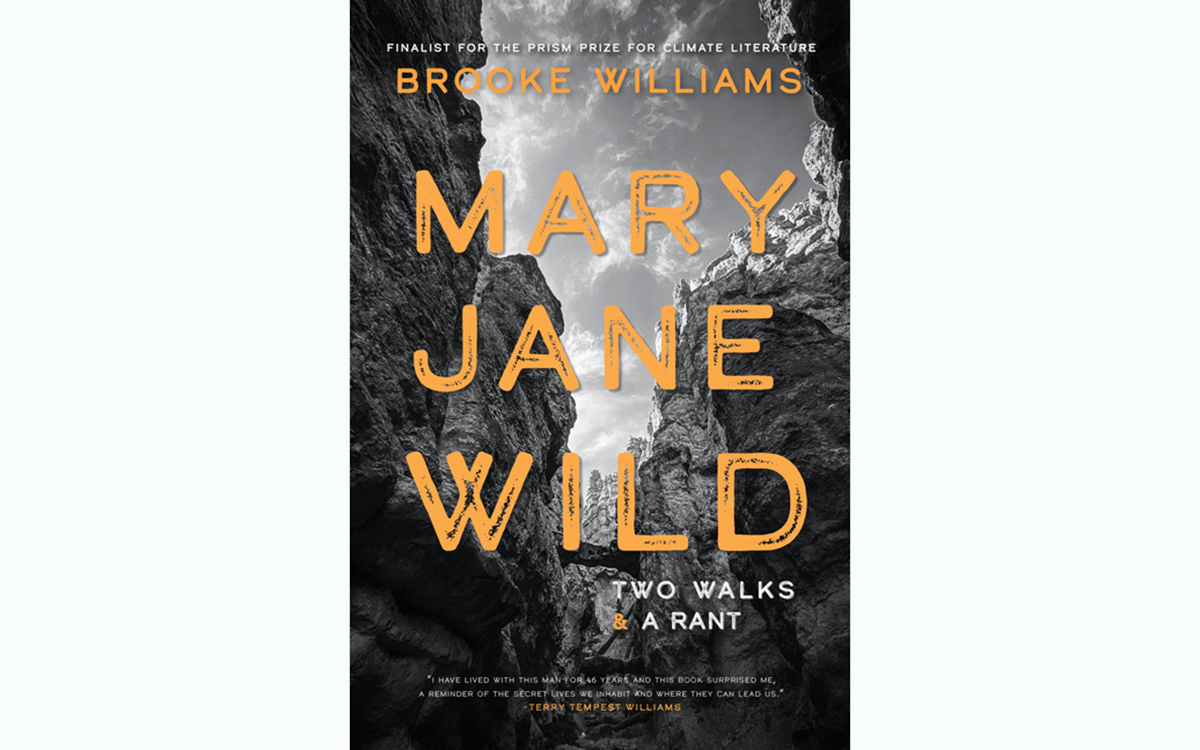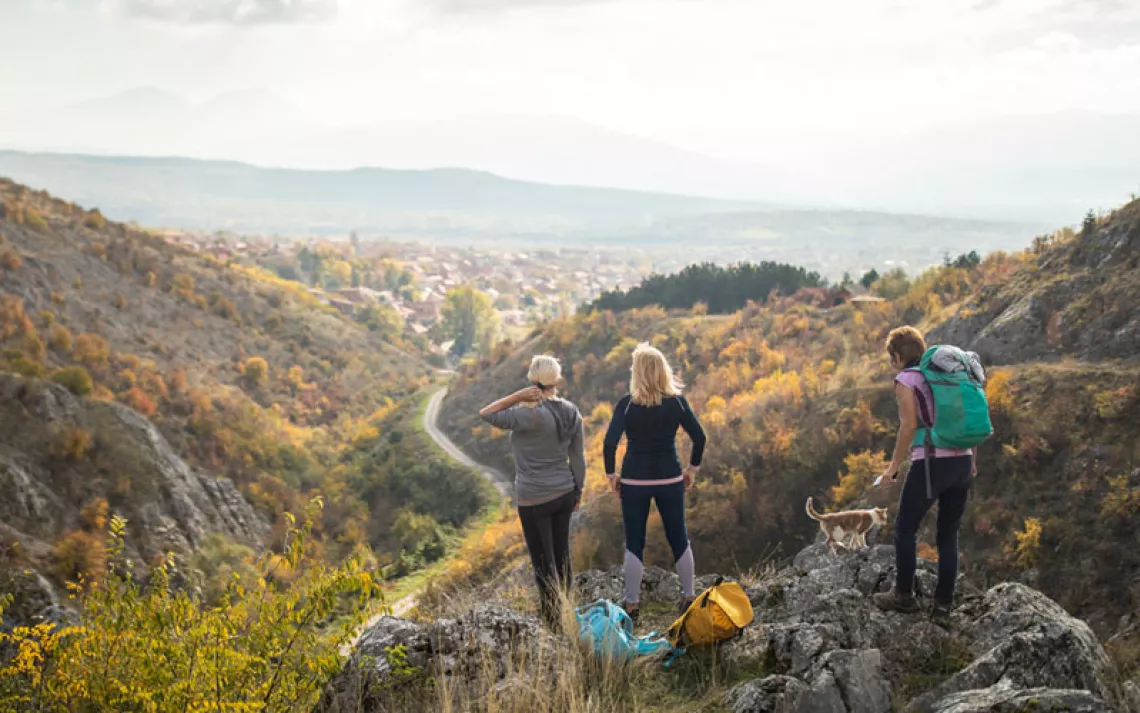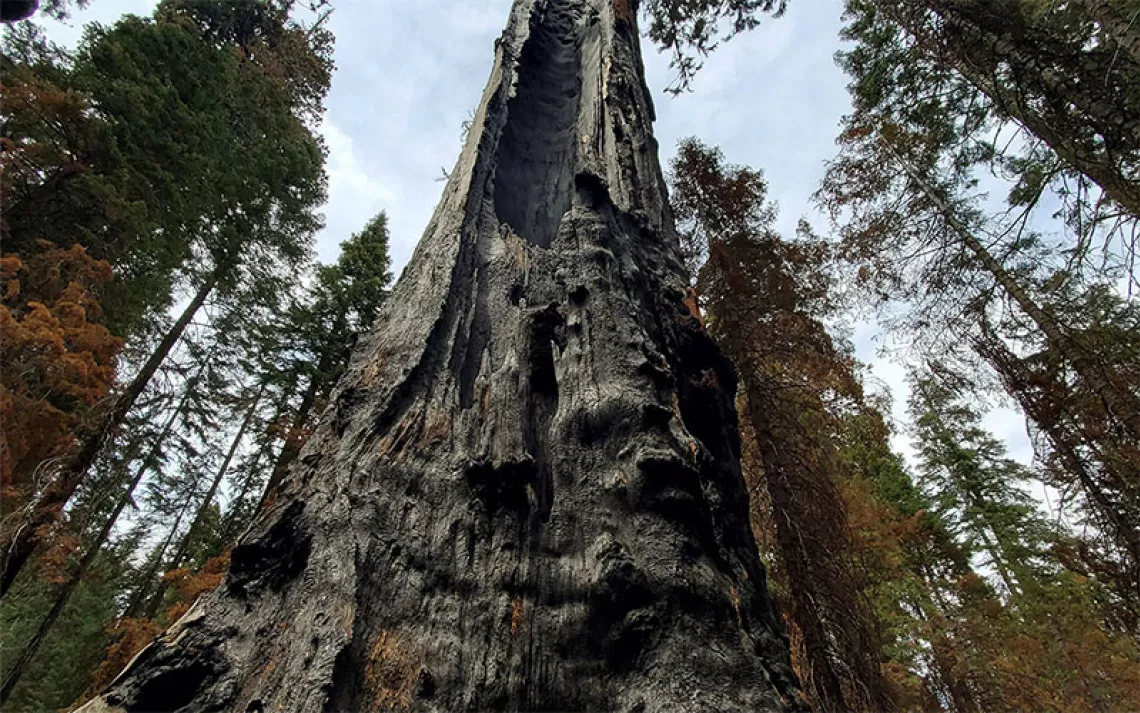Stoke Versus Awe
A self-described hermit tourist meditates on how the wilderness can make us spiritual pilgrims

Image by klyaksun/iStock
Excerpted from Mary Jane Wild: Two Walks & a Rant. Republished courtesy of Homebound Publications.
For years I’ve been thinking about hermits—their traditions of living in the wild places and being sought out for their wisdom by city dwellers. If I could find the relationship between wildness and wisdom, I thought, we might not have to fight constantly for wilderness protection. I reasoned that since hermits need good warm clothes, too, if enough of them spent enough time in the wilds, they could create an entirely new segment of the outdoor industry.
Then pandemic forced me to stay close to home, where I was surrounded by wildness. In a sense the pandemic forced me to become a hermit. I’m still wondering if I gained any wisdom.
Any progress I’ve made in raising support for my prediction that the next big shift in the outdoor industry will be toward the "hermit market" is invisible. The gear manufacturers are still years away from developing new products aimed specifically at new hermits. My work is cut out for me.
Stacy Bare and I have had a few conversations during which we touched on the subject. Stacy is a veteran of the Iraq War, who on returning, self-medicated his PTSD first with drugs and alcohol and then wildness. We met over our common interest in "awe." Where my interest is in the relationship between experiencing awe and our pro-social behavior, Stacy is showing it to be an antidote to PTSD for veterans. Stacy is young and strong and carries an XXL heart in his chest. He once suggested we write together about “Stoke” vs. “Awe” in the outdoor experience.
“Stoke” refers to the adrenaline-produced thrill and excitement associated with the extreme dimension of the outdoor experience. Stoke pays the bills: company-sponsored young people developing their bodies to put them faster into higher, farther, steeper, and more dangerous places, which with Instagram and YouTube are instantly converted (reduced) to playgrounds or stages on which truly spectacular feats are acted out. But would photos of a hermit in a blue puffy Patagonia “Fitzroy” parka watching the cold desert light change sell many? Probably not.
Still, I believe that spending any time in the wilds makes one a better person, but there are variables. Yes, scientists have shown that experiencing awe contributes to "pro-social" behaviors—the desire to contribute to the greater good. But I’ve also learned that experiencing "awe" is unlikely during exposure to emotional or physical danger. While there are extreme athletes who are emotionally, physically, and financially committed to "pro-social" causes (especially causes which directly impact their professions, such as climate and wilderness protection), the two are not necessarily aligned. I am convinced that contemplative time in the wilds is more conducive to "awe" and the "pro-social behavior" that accompanies it.
How then, I wonder sitting here, contemplatively, hoping to shorten the long night by staying upright as long as possible, are Hermits impacted by awe?
Hermits like wilderness more than civilization. Hermits seek contemplation and solitude in the wilderness, which opens them to awe. Which is why hermits seek out the greater good. This may be why hermits are perceived to be wise and sought out for their wisdom.
Again, this may be due to my age, but the hermit dimension of the wild world seems worth considering for its potential good. This could be the "hermit tradition" that America lacks.
Perhaps we divide our parks and wild places into sacrifice zones and sacred zones. Both words have “sac” as its root. The Latin term sacrificium (a sacrifice) derived from Latin sacrificus (performing priestly functions or sacrifices), which combined the concepts sacra (sacred things) and facere (to do or perform). This implies that what is sacrificed can’t be sacred. “Sacrifice” means giving up something for a higher purpose. National parks are spectacular natural landscapes that multitudes want to experience. Accommodating growing numbers of visitors means sacrificing wildness. The higher purpose for which wildness is sacrificed is that society benefits in proportion to the numbers of its members who experience natural wonders.
The sacrifice zones are like most of Arches and Yosemite National Parks, which are designed to provide comfort and education to large numbers of people.
“Sacred zones” would be for hermits. Hermits would need solitude for contemplation. Few facilities would be necessary in "sacred zones." Camping would be low impact. Some areas would require quotas and permits. “Sacred zones” would be for those seeking an "existential," awe-inducing experience. In defining "wilderness," the Wilderness Act itself comes close to describing "sacred zones.”
Where a "sacrifice zone" provides the outer world experience, the "sacred zone" encourages the traveler’s inner world experience.
Years ago, while exploring the notion that tourism may have a role in changing the world, I came across the word “existential” in Spiritual Tourism: Travel and Religious Practice in Western Society, a book by Alex Norman, an Australian scholar. The book categorizes tourists according to relationship to their "center." I knew the word existential when I saw it but had never seen or imagined it in the context of "tourism." According to the book, tourist/travelers have one of five possible experiences, including recreational, experiential, experimental, and existential, and diversional—those who travel to temporarily escape regimented and pressurized modern lives. "Existential" tourists—also referred to as "pilgrims"—travel as a spiritual practice to access places of higher meaning. They’re dedicated to collective well-being. That five different people could be in the same physical place at the same time and have these five different experiences fascinates me.
Perhaps there’s a sixth tourist experience—the Hermit tourist.

 The Magazine of The Sierra Club
The Magazine of The Sierra Club







